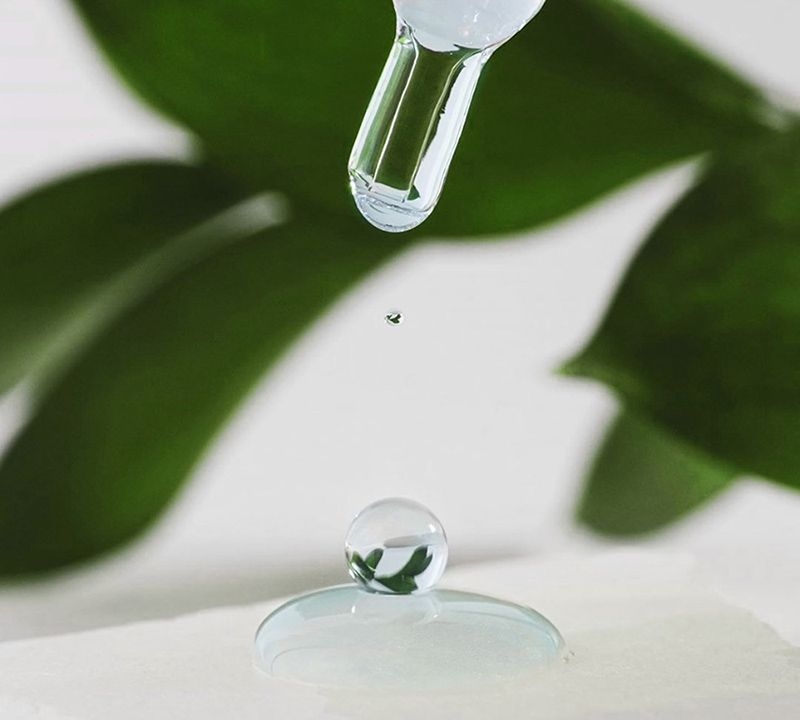
Image: @graydonskincare
To set the stage for a discussion around moth beans it might be best to start with retinol - currently one of the most popular beauty ingredients out there. Its years of service in the fight against skin ageing have proven it to be a leader in its field. Retinol promises to iron out wrinkles, tackle pigmentation and make the skin more supple. And on all of this it delivers.
The trouble is that despite these benefits it is a difficult ingredient to get on with. Many start using retinol only to give it up a month later. Not everyone has the patience to find a gentle enough concentration that will not cause irritation, intense peeling and burning. Not to mention that its use is not recommended during pregnancy and breastfeeding.
Today’s clean beauty brands have found a way around this by using the more delicate but no less effective plant equivalents of retinol. Moth bean is one of them. So, can it get its own spotlight in the anti-ageing skincare? Let us cut to the chase.
This unsightly but resilient bean is grown widely in arid parts of India, Burma and Pakistan. The name “moth bean” derives from its split pastel yellow and pink flowers which resemble the wings of a butterfly. A crawling plant which can survive prolonged dry periods, it is cultivated for its unpretentiousness and ability to thrive in hot climates.
Moth beans can be consumed raw or sprouted. In Indian cuisine they are used to make a spicy dahl soup with coconut milk and curry leaves. The beans are a reliable source of protein and fibre making such dishes hugely beneficial for our gastrointestinal system.
As well as their 3-4mm of protein, moth bean seeds boast an abundance of nutritious substances such as B group vitamins (associated with stress reduction) as well as vitamins A, C, PP, microelements and fatty acids. In recent times, moth beans have also started turning heads as the new kid on the block in anti-ageing skincare.
Skincare products typically utilise moth bean seed extract which is labelled as Vigna Aconitifolia Seed Extract. Its uses range from skin lifting, wrinkle and pigmentation reduction, skin lightening and inflammation reduction.
All of the above also applies to retinol (provitamin A) and its derivatives. But with retinol’s effectiveness comes a myriad of inconvenient side effects such as dryness, irritation, redness and peeling. It is for this reason that skincare experts recommend introducing retinol-based creams and serums gradually into your routine, starting as rarely as once a week. Retinol-containing products are not recommended all together for sensitive skin.
Pure retinol is also sensitive to light which means that it disintegrates under the influence of ultraviolet, which is why retinol products are usually recommended as part of an evening routine. Due to retinol’s ability to trigger pigmentation, SPF use is essential. Irritation and side effects can also be caused by an overly potent concentration of retinol or, simply, an unsuitable formulation.
Plant alternatives to retinol are generally more hassle free. Moth bean extract has all of the same qualities minus the discomfort. It also does not require gradual implementation due to its gentle action which makes it suitable even for sensitive skin. Unlike retinol, products containing moth bean extract can be used during the day. But like retinol it penetrates through the skin and activates collagen synthesis and cell renewal.
Moth bean extract is still a relatively new and rare beauty ingredient. Its current use is limited to anti-ageing formulations by natural and organic brands looking to create products which deliver maximum comfort. As a plant alternative to retinol, it is more gentle on the skin, can be used during pregnancy and breastfeeding, and is not sensitive to light. There is also now emerging evidence to back the manufacturers’ claims regarding the benefits of moth beans in their products.
A case study conducted in India demonstrated that moth bean seeds contain antioxidants, phytic acid and tannins. All of these are instrumental for keeping the skin protected from damage, external stressors and premature ageing. It is the presence of these ingredients that has paved the way for moth bean to be used in cosmetic products.
Another interesting study compared moth beans to retinyl palmitate, one of the more stable types of retinol. It was discovered that plant-derived retinol is more effective at speeding up cell turnover than retinyl palmitate. Despite the fact that this kind of retinol and palmitic acid ester is considered less strong than pure retinol, the potential of moth beans demonstrated here is clear-cut.